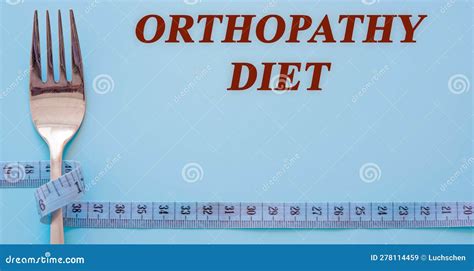Discover the history, ingredients, nutritional value, controversy, and alternatives to the infamous prison loaf in this comprehensive blog post.
History of Prison Loaf
Contents
The prison loaf is a type of food served in many correctional facilities across the United States. It is also known as disciplinary loaf, special management meal, or simply prison food. The history of prison loaf dates back to the early 20th century, when it was first introduced as a form of punishment for inmates who misbehaved or violated prison rules. The origins of this harsh dietary practice can be traced to the belief that depriving inmates of regular meals and serving them a bland and unappetizing loaf would serve as a deterrent for bad behavior.
Prison loaf was initially made from whatever ingredients were available in the kitchen and could vary widely from one facility to another. In the early years, it often consisted of a mixture of bread, vegetables, and other leftovers, all blended together and baked into a dense, flavorless block. This unappetizing meal was not only intended to discipline inmates but also to be economical for the prison system, as it utilized inexpensive and readily available ingredients.
Over time, the use of prison loaf as a punitive measure came under scrutiny from human rights advocates and organizations, who argued that it was inhumane and violated the basic rights of prisoners. As a result, many correctional facilities phased out the practice of serving disciplinary loaf, instead opting for more nutritious and palatable meal options for their inmates. However, prison loaf remains a controversial symbol of the harsh conditions and disciplinary measures that have historically been a part of the U.S. prison system.
In recent years, there has been a growing awareness of the need to reform the food served in correctional facilities, with an emphasis on providing adequate nutrition and promoting rehabilitation rather than punishment. While the history of prison loaf is rooted in a punitive approach to inmate discipline, its decline in usage reflects a shifting understanding of the role that diet plays in the rehabilitation and well-being of incarcerated individuals.
Ingredients of Prison Loaf
Prison loaf is a meal commonly served in prisons as a form of punishment or disciplinary action. The ingredients used in making prison loaf are typically simple and bland, designed to provide sustenance without any enjoyment. While the specific ingredients can vary from one institution to another, the main goal is to create a meal that is unappealing and unappetizing.
The basic ingredients of prison loaf usually include some type of bread or grain, often mixed with a variety of vegetables such as carrots, spinach, and beans. These components are combined with protein sources like soy or powdered milk, as well as a small amount of fat or oil for caloric content. The mixture is then formed into a dense, cohesive loaf and baked until firm.
In some cases, additional ingredients such as rice, oatmeal, or even canned fruit may be added to the prison loaf mixture. It is worth noting that the exact recipe and ingredients used for prison loaf can differ based on the policies of the correctional facility, as well as any dietary restrictions or regulations in place.
Overall, the ingredients of prison loaf are deliberately chosen to be dull, monotonous, and devoid of any distinctive flavor. It is a meal that serves a solely functional purpose, providing sustenance without any enjoyment or culinary satisfaction.
Nutritional Value of Prison Loaf
Prison loaf, also known as disciplinary loaf or special management meal, is a food served in some prisons as a form of punishment. This method of punishment involves serving a loaf made from various processed ingredients, such as vegetables, meat, and starches, to inmates who have violated prison rules.
Despite its controversial nature, prison loaf provides a significant amount of nutritional value to inmates. The loaf is designed to meet the basic nutritional needs of inmates while also discouraging misconduct. It typically contains a balance of protein, carbohydrates, and essential vitamins and minerals.
While the taste and presentation of prison loaf may not be appealing, its nutritional content is carefully calculated to ensure that inmates receive adequate sustenance. The ingredients used in the loaf are selected to provide essential nutrients that support overall health and well-being.
Although prison loaf is a subject of debate due to its association with punitive measures, it is important to acknowledge the nutritional value it offers to incarcerated individuals. Proper nutrition is essential for maintaining physical and mental health, especially in correctional facilities where access to a variety of food options may be limited.
Controversy Surrounding Prison Loaf
The controversy surrounding prison loaf primarily stems from the questionable methods used to create the loaf and the ethical concerns regarding its use in correctional facilities. Firstly, there is a lack of transparency regarding the ingredients used in the loaf, leading to widespread speculation and mistrust among inmates. Many argue that the loaf is a form of punishment that is dehumanizing and inhumane, as it is often used as a disciplinary measure for prisoners who have violated rules or regulations within the prison.
Furthermore, critics of the prison loaf argue that the nutritional value of the loaf is subpar and does not meet the dietary needs of incarcerated individuals. The loaf is often described as bland, unappetizing, and lacking in essential nutrients, which has raised concerns about the well-being and health of inmates who are subjected to this form of sustenance.
Another point of controversy is the debate surrounding the legality and ethics of using prison loaf as a means of punishment. Many argue that the loaf violates basic human rights and constitutes a form of cruel and unusual punishment, which is prohibited by international human rights laws and standards.
In addition to these ethical concerns, there is also controversy surrounding the effectiveness of using prison loaf as a deterrent for misconduct within correctional facilities. Some argue that the loaf serves as a punitive measure that does not address the underlying issues that contribute to misconduct, such as mental health issues or lack of access to proper education and rehabilitation programs.
Alternatives to Prison Loaf
When it comes to finding alternatives to prison loaf, it’s important to consider the nutritional value and cost-effectiveness of the replacement options. One alternative to prison loaf is to provide inmates with a balanced and varied diet that includes fresh fruits, vegetables, and lean proteins. This approach would not only improve the nutritional quality of the food but also offer more variety and flavor for the inmates.
Another alternative is to allow inmates to have access to a commissary where they can purchase their own food items. This would give them the freedom to choose foods that they enjoy and that meet their dietary preferences and cultural needs. However, it’s crucial to set guidelines and restrictions to ensure that the purchased items are in line with the nutritional requirements.
Additionally, implementing cooking classes and nutrition education programs in prisons can empower inmates to make better food choices and prepare their own meals. This would not only provide them with valuable life skills but also give them a sense of autonomy and control over their diet.
Furthermore, exploring partnerships with local food banks and community organizations can provide prisons with access to donated or discounted food items. This can help in diversifying the meals offered to inmates and reducing the reliance on prison loaf as the primary food option.
In conclusion, there are several alternatives to prison loaf that focus on improving the nutritional quality, variety, and autonomy of food options for inmates. By considering these alternatives, prisons can work towards promoting better health outcomes and rehabilitation for the incarcerated individuals.













